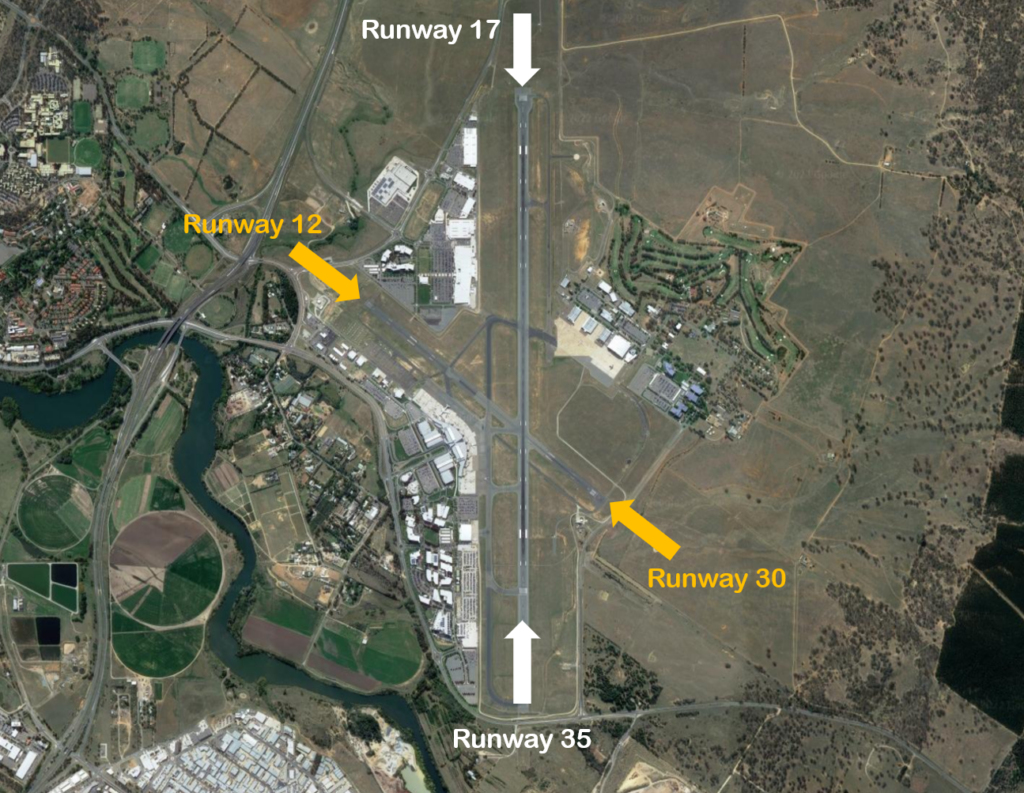Canberra Airport Runways
Canberra Airport has two runways; the main runway 17/35 (3.28 km long) is orientated north-south and is used for the majority of aircraft traffic. The shorter runway 12/30 (1.67km) is orientated east-west and is used mainly for propeller aircraft.
Each runway is referred to differently according to in which direction it is being used. For example the main runway is known as Runway 35 when used in a northerly direction and Runway 17 when used in a southerly direction. Runway numbering reflects the runways’ orientation and correlates with degrees on a compass. Runway 35 is 350 degrees.
An Instrument Landing System operates for aircraft landing on Runway 35, and Smart Tracking procedures are available for aircraft landing on Runways 35 and 17.

The following video explains how runways are named and used.
Runway selection and seasonal winds
Runway selection is based on wind direction, weather conditions, traffic volume and other factors. Aircraft primarily take-off and land into the wind for safety and performance reasons. Therefore, as the wind direction changes the runway in operation may also change depending on the strength of the wind.
This means that Canberra’s seasonal wind patterns affect usage of the different runway directions. The prevailing winds favour Runway 35 which is used more than 70 per cent of the time. Runway 17 tends to be used more frequently in the warmer months than at other times, but this does vary.
Noise abatement procedures
A noise abatement area applies to most residential areas of Canberra and Queanbeyan. Aircraft will normally be routed to avoid the noise abatement area, which covers most of Gungahlin, North Canberra, Belconnen, South Canberra, Woden, Tuggeranong and Queanbeyan. Where it is not practical for aircraft to remain clear of those areas, during overflight jet aircraft must not fly below 7 000 feet above ground level and large propeller aircraft not below 5 000 feet. Smaller propeller aircraft are permitted. A number of exceptions apply to the noise abatement areas such as aircraft emergencies, medical priority flights, avoidance of hazardous weather, missed approaches and operational requirements.


